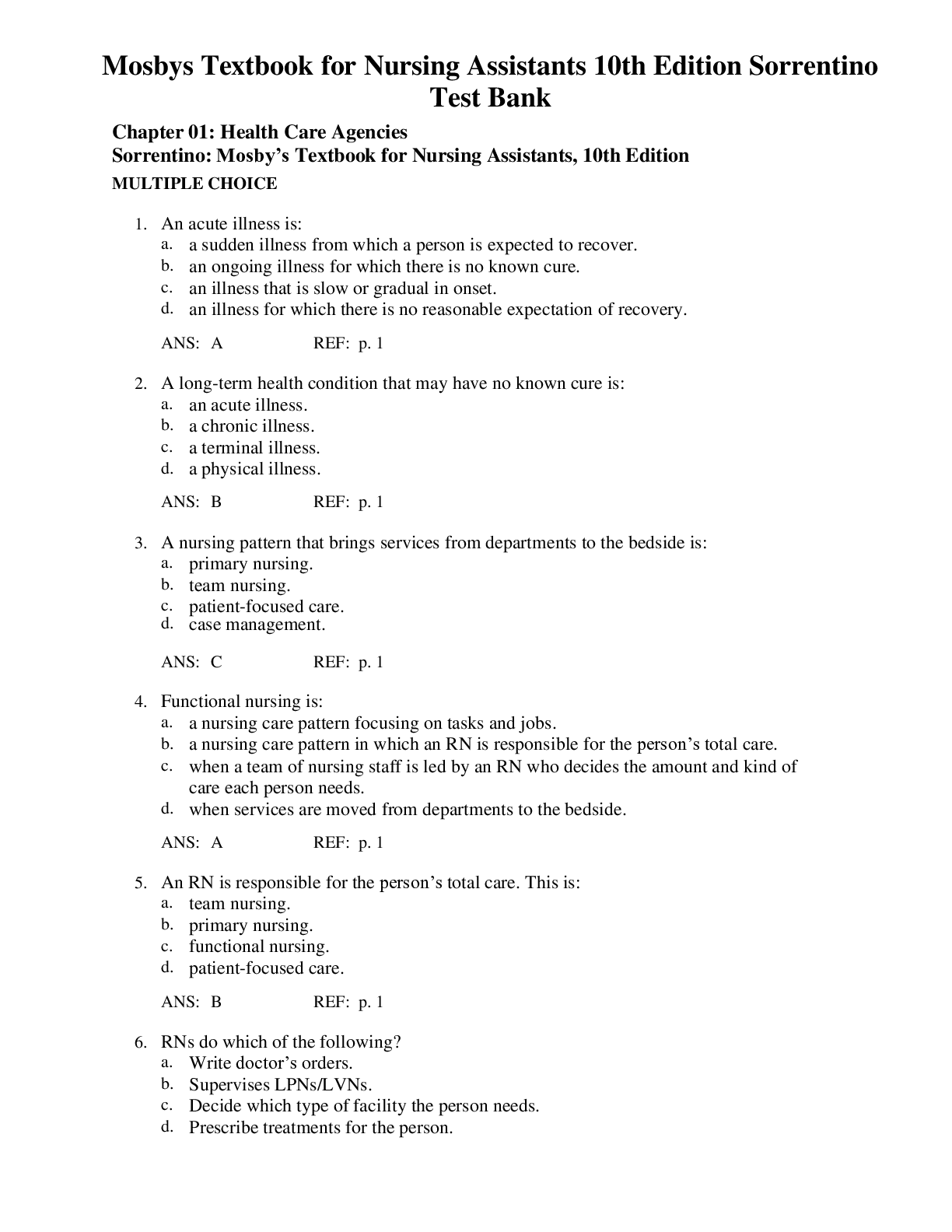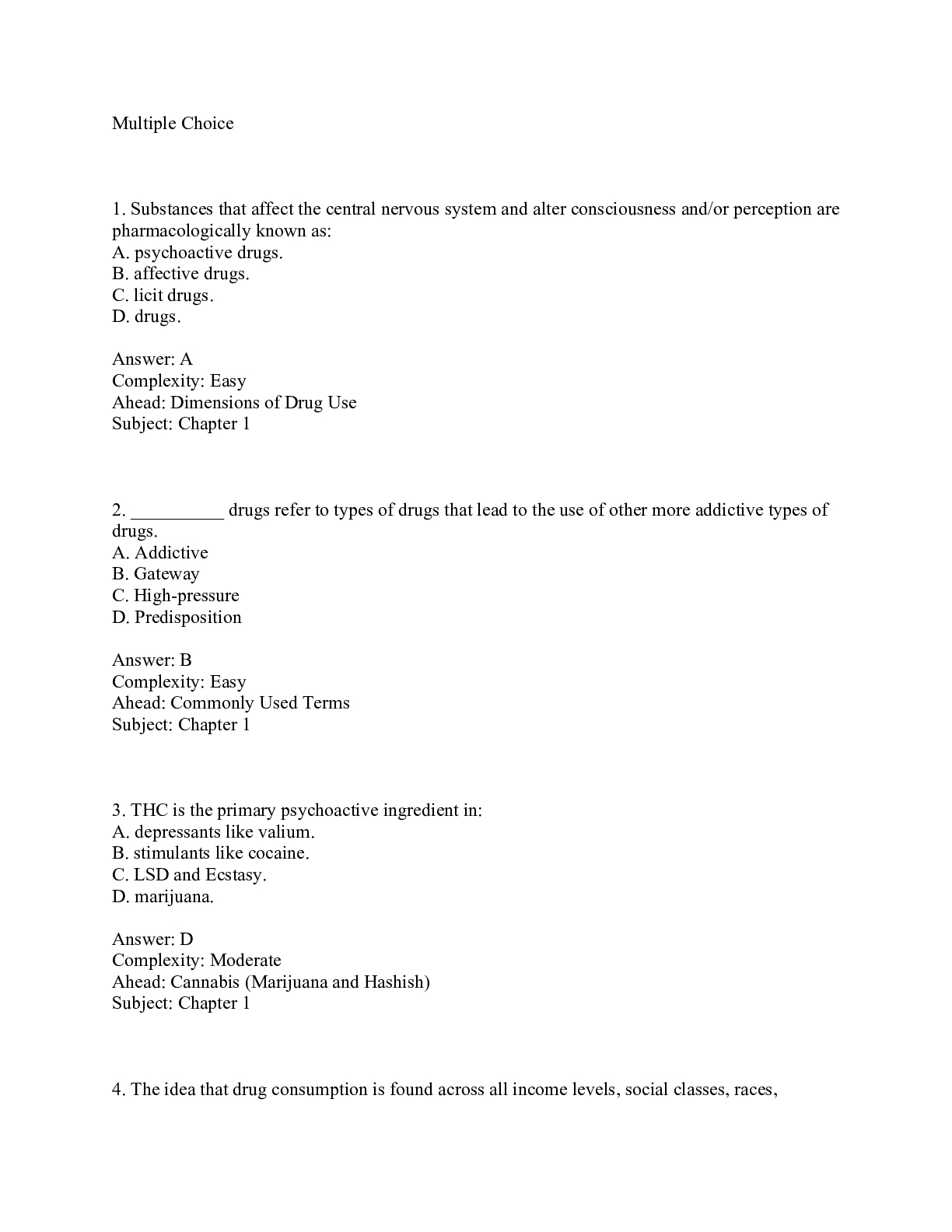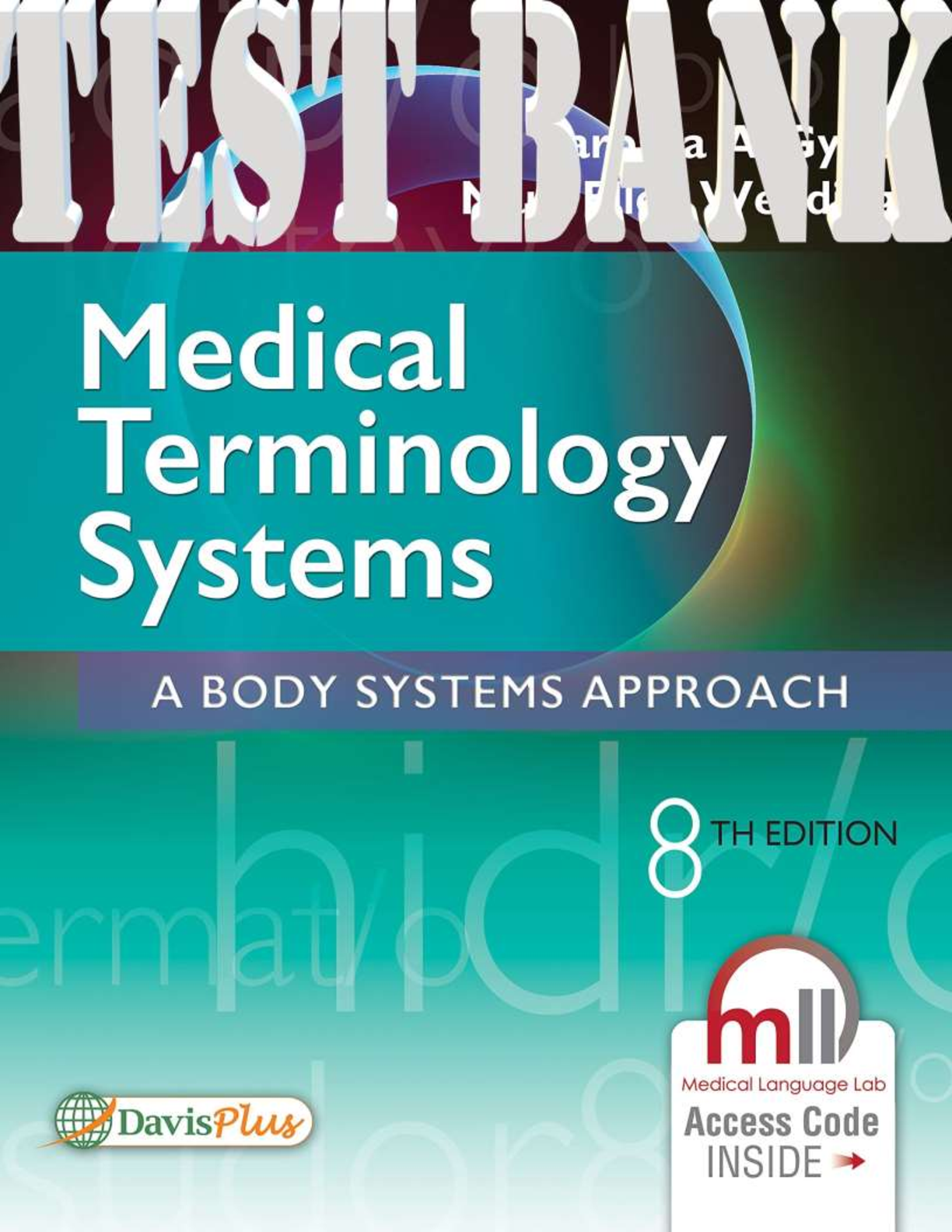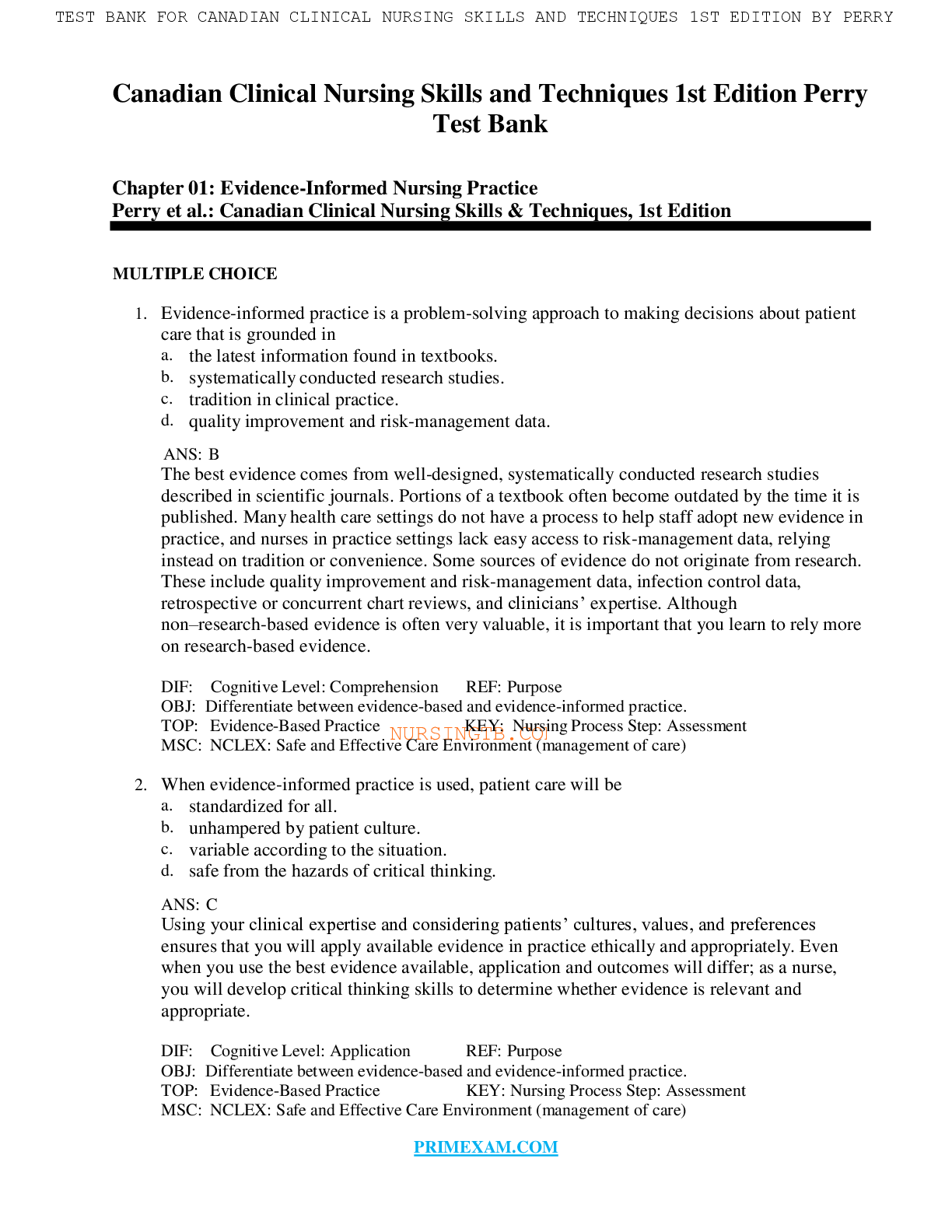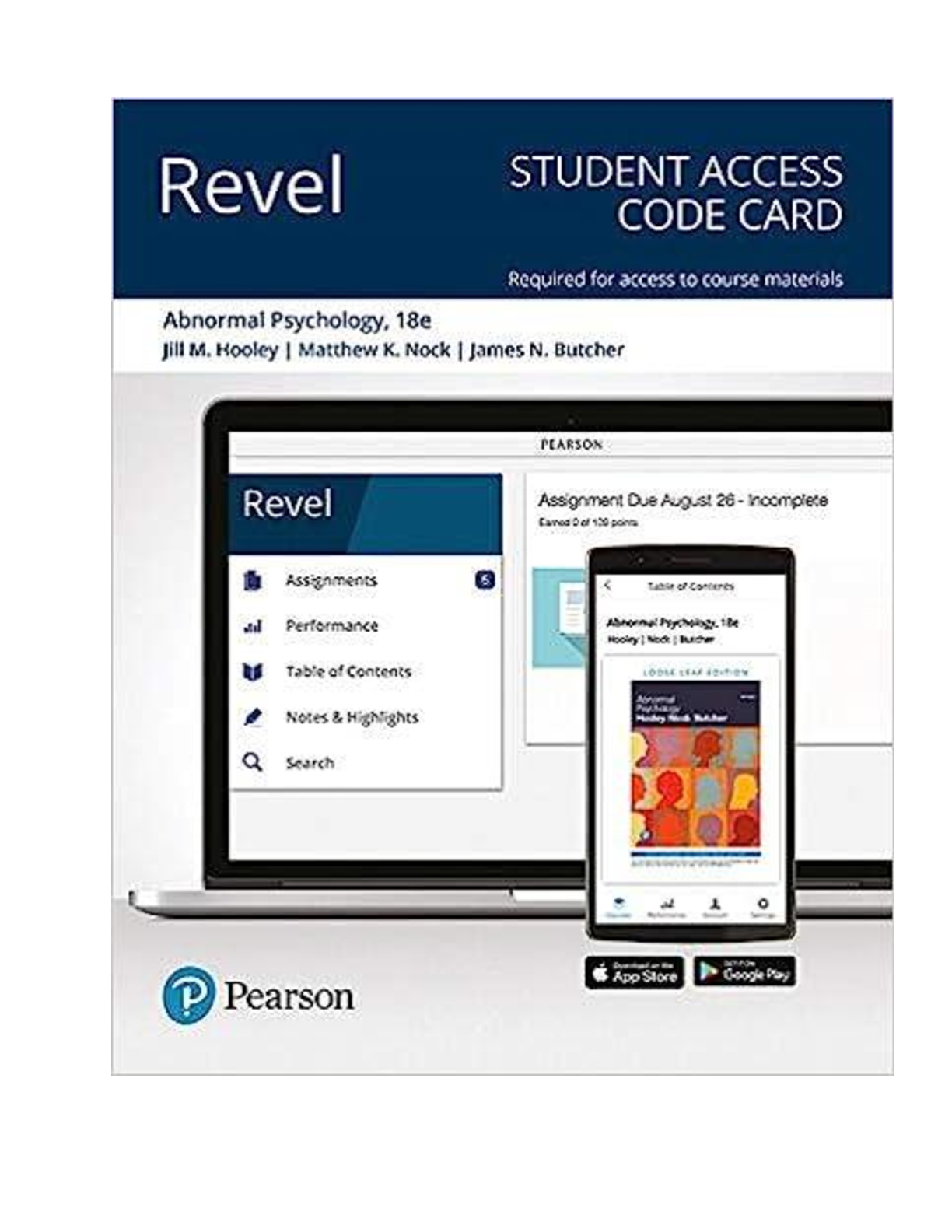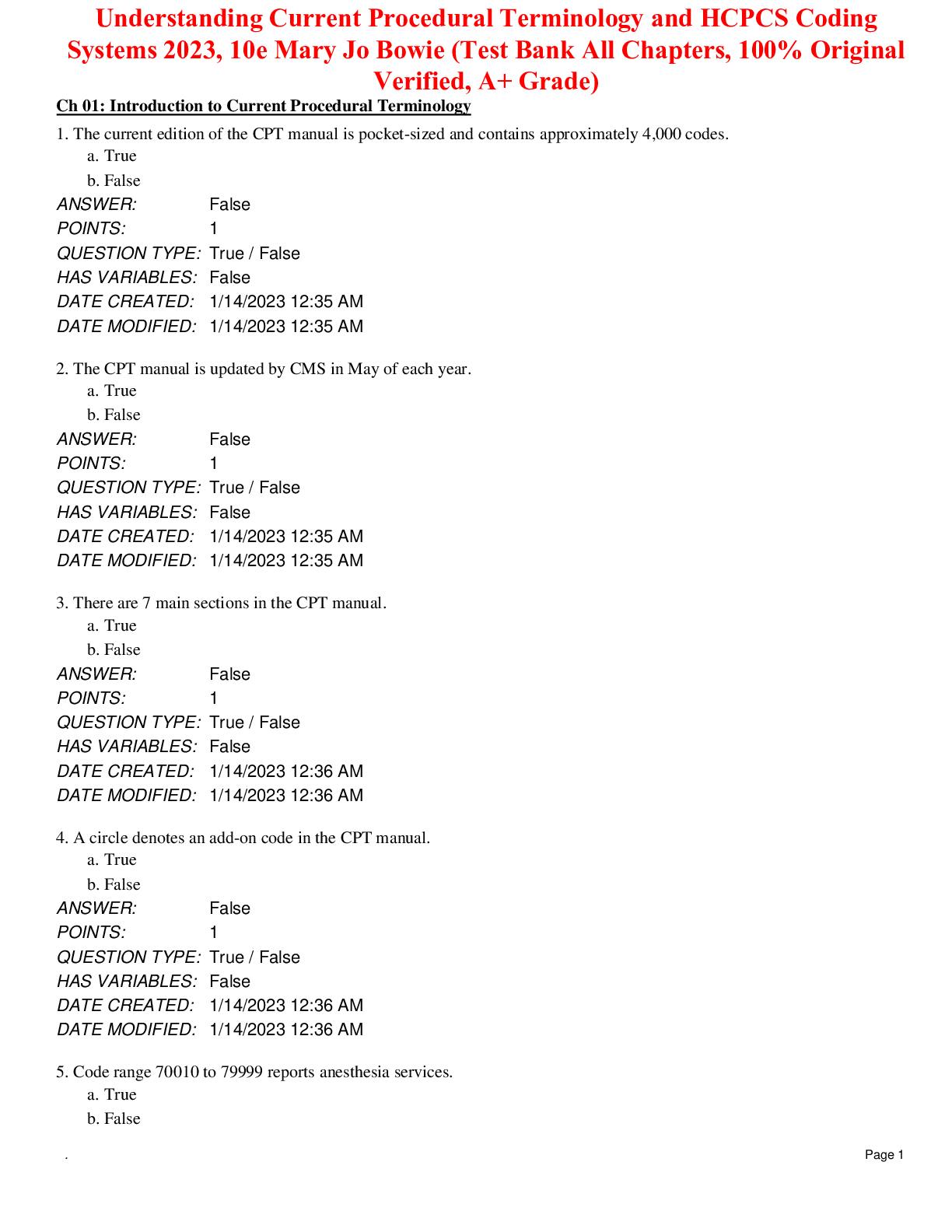Pathotestbank2 NURSING NR 283
Document Content and Description Below
1. Which of the following areas lacks blood vessels and nerves? a. Epidermis b. Dermis c. Subcutaneous tissue d. Fatty tissue 2. What is a raised, thinwalled lesion cont... aining clear fluid called? a. Papule b. Pustule c. Vesicle d. Macule 3. Which of the following is a common effect of a type I hypersensitivity response to ingested substances? a. Contact dermatitis b. Urticaria c. Discoid lupus erythematosus d. Psoriasis 4. What change occurs in the skin with psoriasis? a. Recurrent hypersensitivity reactions b. Autoimmune response c. Increased mitosis and shedding of epithelium d. Basal cell degeneration 5. Which of the following best describes the typical lesion of psoriasis? a. Purplish papules that can erode and become open ulcers b. Firm, raised pruritic nodules that can become cancerous c. Moist, red vesicles, which develop into bleeding ulcers d. Begins as a red papule and develops into silvery plaques 6. Why do secondary infections frequently develop in pruritic lesions? c. Blockage of sebaceous glands d. Increased sweat production 7. Which disease is considered an autoimmune disorder? a. Pemphigus b. Erysipelas c. Contact dermatitis d. Scleroderma 8. Which of the following skin lesions are usually caused by Staphylococcus aureus? a. Furuncles b. Verrucae c. Scabies d. Tinea 9. Which of the following statements applies to impetigo? a. Lesions usually appear on the hands and arms. b. The cause is usually a virus. c. The infection is highly contagious. d. Scar tissue is common following infection. 10. What is the common signal that a recurrence of herpes simplex infection is developing? a. Severe pain around the mouth b. Malaise and fatigue c. Fever and severe headaches d. Mild tingling along the nerve or on the lips 11. Herpes virus is usually spread by all of the following EXCEPT: a. saliva during an exacerbation and for a short time thereafter. b. contact with the fluid in the lesion. c. contaminated blood. d. autoinoculation by fingers. 12. How are antiviral drugs effective in treating a viral infection? a. They destroy the virus if administered for at least 2 weeks. b. They limit the acute stage and viral shedding. c. They prevent any systemic effects of viruses. d. They prevent any secondary bacterial infection. 13. Tinea capitis is an infection involving the: a. trunk. b. feet. c. scalp. d. nails. 14. Plantar warts are caused by: a. the fungus aspergillus. b. a parasitic arthropod. c. human papillomavirus. d. the bacterium Streptococcus pyogenes. 15. Which of the following statements regarding acute necrotizing fasciitis is TRUE? a. Infection is localized in a small area of the epidermis. b. It is usually caused by S. aureus. c. Spontaneous recovery usually occurs in 48 hours. d. Infection rapidly causes extensive tissue necrosis and toxic shock. 16. Which type of microbe causes Tinea infections? a. Fungus b. Virus c. Gramnegative bacterium d. Mite 17. What causes the pruritus associated with scabies? a. An allergic reaction to the causative microbe due to endotoxins b. Mites burrowing into the epidermis and reaction to their feces c. Bleeding and injected toxin from bites of the larvae d. Neurotoxins secreted by mites on the skin surface 18. How can pediculosis be diagnosed? a. Pruritus in hairy areas of the body b. Loss of blood due to lice bites c. Finding lice in clothing d. The presence of nits at the base of hair shafts 19. What is the major predisposing factor to squamous cell carcinoma? c. Exposure to ultraviolet light d. Frequent hypersensitivity reactions 20. All of the following statements apply to malignant melanoma EXCEPT: a. The malignant cell is a melanocyte. b. They present as non-pruritic purplish macules. c. The neoplasm grows rapidly and metastasizes early. d. The lesion is usually dark or multicolored with an irregular border. 21. Which of the following factors has contributed to the increased incidence of Kaposi’s sarcoma? a. Excessive sun exposure b. Increased number of nevi c. Increase in immunosuppressed individuals d. Presence of more seborrheic keratoses 22. Which of the following applies to actinic keratoses? a. They predispose to malignant melanoma. b. They arise on skin exposed to ultraviolet radiation. c. They occur primarily on dark-skinned persons. d. They are malignant and invasive. 23. Which lesion distinguishes Tinea corporis? a. Small, brown pruritic lines b. Painful and pruritic fissures c. Erythematous ring of vesicles with a clear center d. Firm, red, painful nodule or pustule 24. Systemic effects of acute necrotizing fasciitis include: a. low-grade fever and malaise. d. headache and difficulty breathing. 25. The cause of contact dermatitis can often be identified by: a. using a culture and sensitivity test on the exudate. b. checking the frequency of the exacerbations. c. noting the location and size of the lesion. d. the type of pain associated with the lesion. A 26. The pathological change associated with scleroderma is: a. abnormal activation of T lymphocytes and an increase of cytokines. b. an autoimmune reaction damaging the epidermis. c. collagen deposits in the small blood vessels of the skin and sometimes the viscera. d. Type I hypersensitivity and increased serum IgE levels. 27. Choose the best description of the typical lesion of impetigo. a. Large, red, painful nodule filled with purulent exudates b. Small vesicles that rupture to produce a crusty brown pruritic mass c. Red, swollen, painful areas often with projecting red streaks d. Firm, raised papules that may have a rough surface and may be painful 28. Choose the correct match of the skin condition and its usual location. a. Scabies—fingers, wrists, waist b. Impetigo—legs, feet c. Pediculosis humanus corporis—scalp d. Seborrheic keratosis—feet, hands 29. Leprosy (Hansen’s disease) is caused by: a. a fungus. b. a bacterium. c. a virus. 30. One factor that is responsible for increasing the mortality rate among patients suffering with necrotizing fasciitis is: a. a delay in initial diagnosis. b. lack of proper antibiotics. c. the appearance of additional opportunistic infections. d. secondary fungal infections. 1. Which of the following would result from a reduced number of erythrocytes in the blood? a. Increased hemoglobin in the blood b. Decreased hematocrit c. Increased risk of hemostasis d. Decreased osmotic pressure of the blood 2. What term is used to describe a deficit of all types of blood cells? a. Leucopenia b. Neutropenia c. Pancytopenia d. Erythrocytosis 3. Capillary walls consist of: a. multiple endothelial layers. b. a thick layer of smooth muscle. c. two or three epithelial layers. d. a single endothelial layer. 4. Vitamin K is required by the liver to synthesize: a. heparin. b. prothrombin. c. amino acids. d. bilirubin. .............................................................................continued......................................................... [Show More]
Last updated: 1 year ago
Preview 1 out of 112 pages
Instant download
.png)
Instant download
Reviews( 0 )
Document information
Connected school, study & course
About the document
Uploaded On
Jun 04, 2021
Number of pages
112
Written in
Additional information
This document has been written for:
Uploaded
Jun 04, 2021
Downloads
0
Views
38

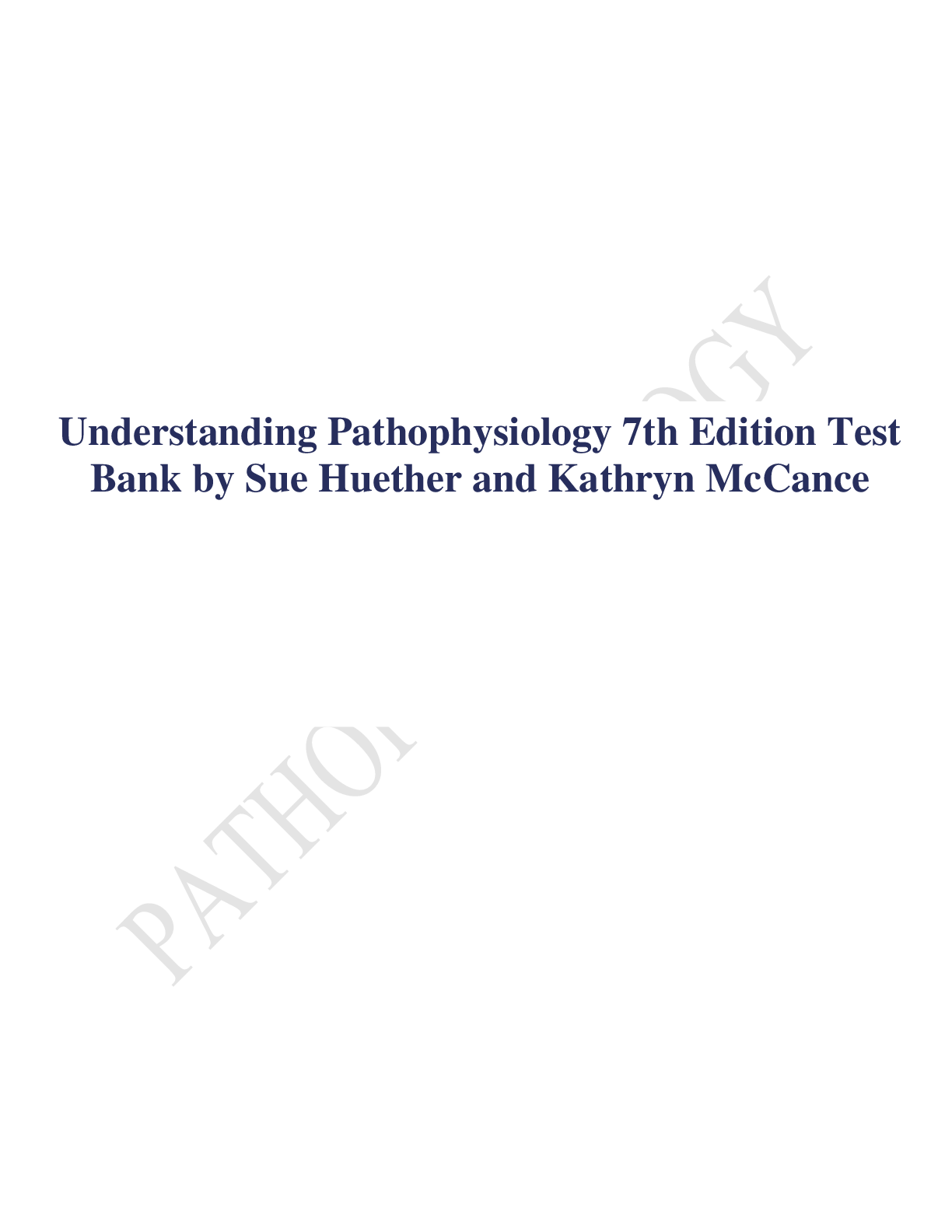
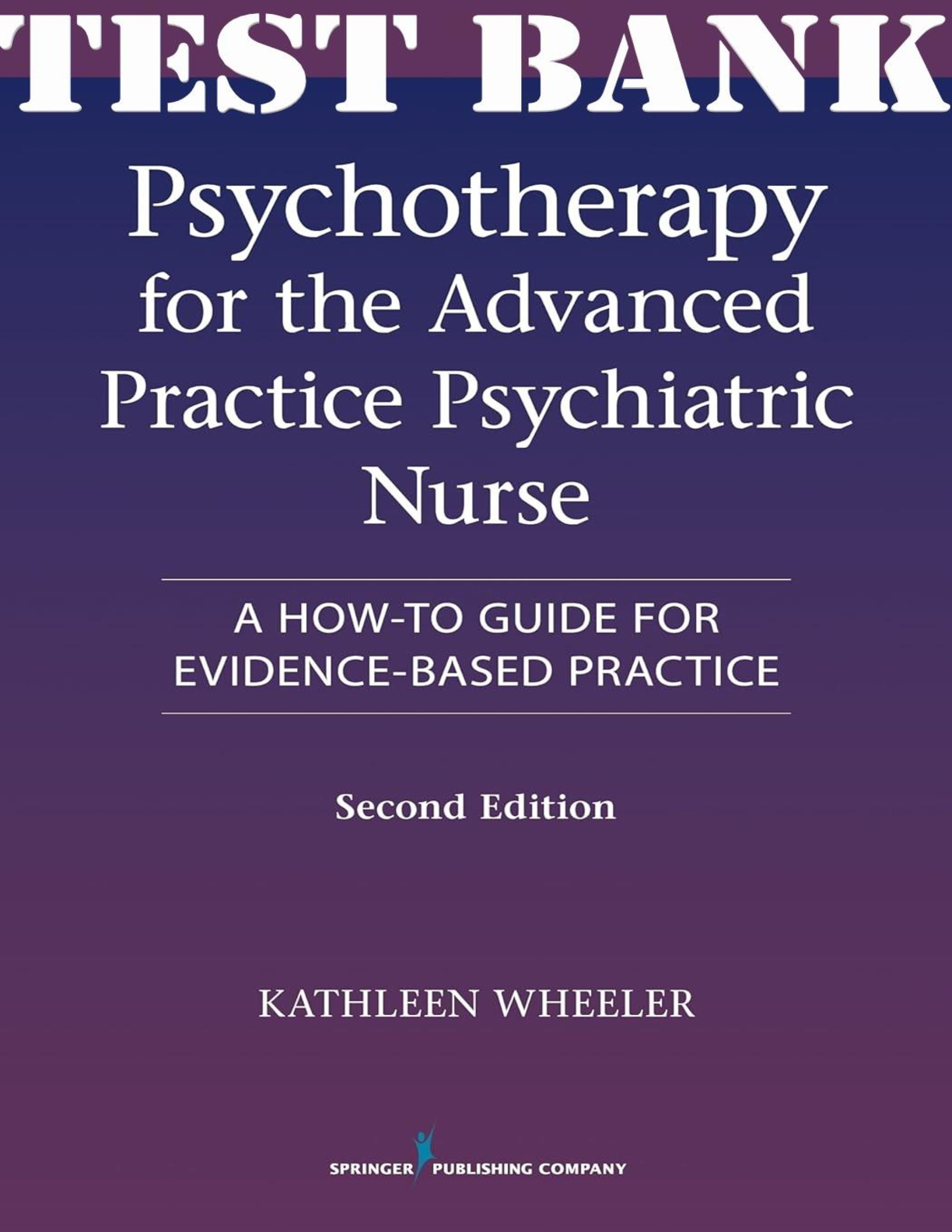


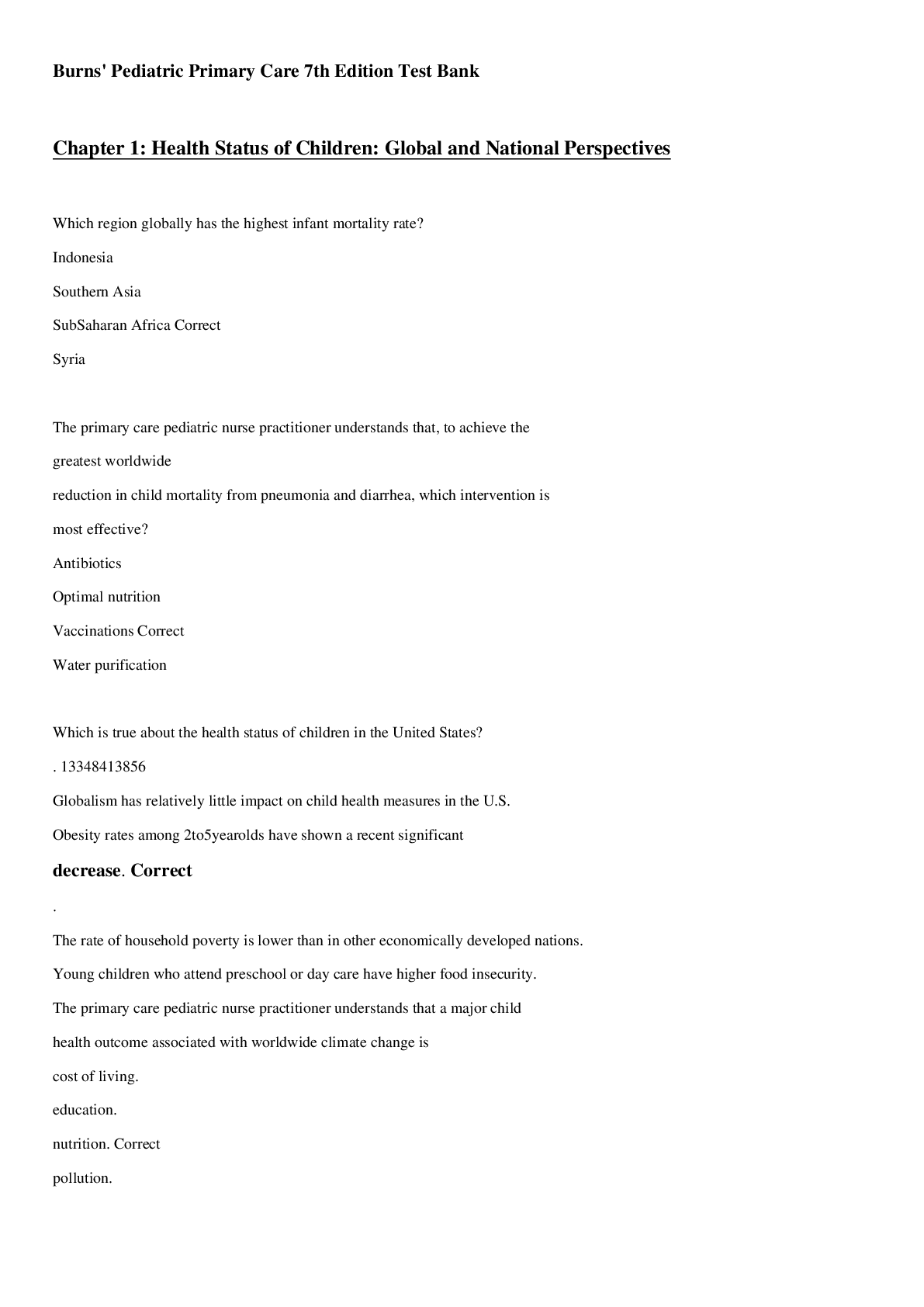



 (1).png)

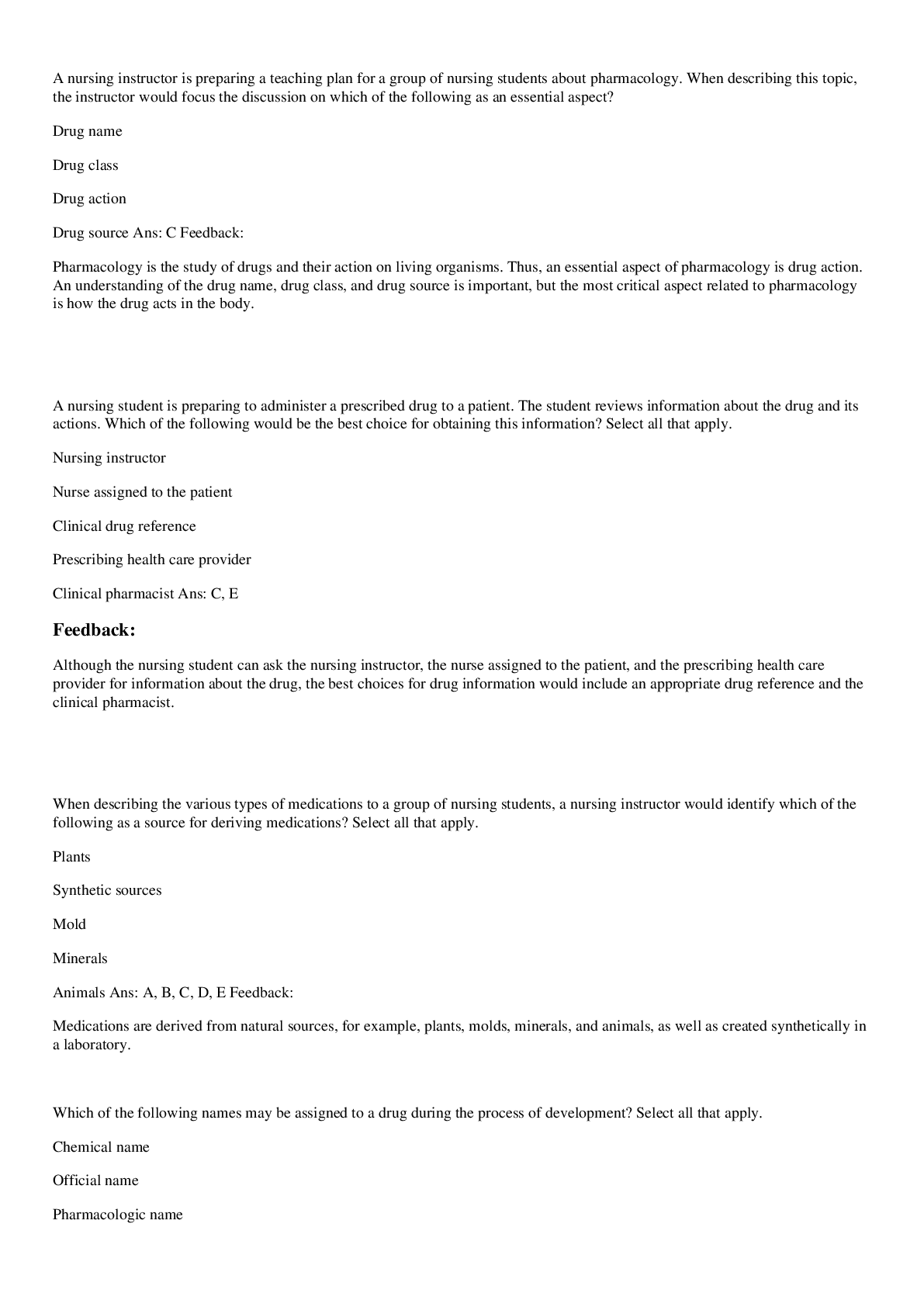






.png)
.png)
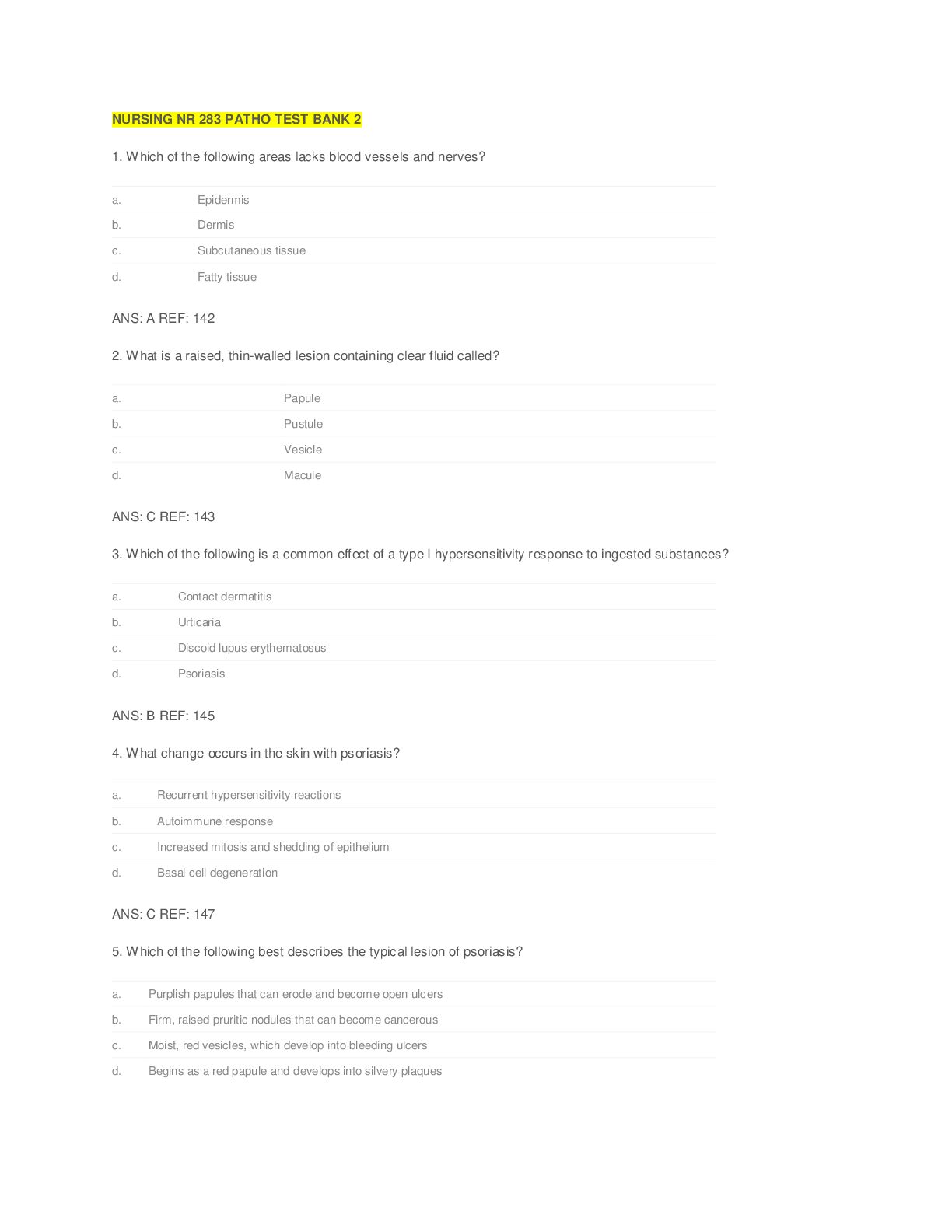
.png)
